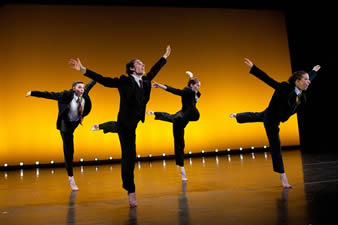Two Roads to Exile: Adolf Busch, String Sextet in G, Op. 40; Walter Braunfels, String Quintet in F#, Op. 63; ARC Ensemble, RCA Red Seal 88697 64490 2, ©2010, 66:02, $11.98.
These two composers, whose careers were dramatically impacted and altered, if not reversed, at their peak by the accession to power in 1933 of Adolf Hitler and the Nazis, are mostly ignored, if not entirely forgotten today. Both entered into an exile, albeit not identical in format. Busch, not Jewish, known equally well as a composer and a violinist with his own eponymous quartet, left Germany in protest, first for Switzerland, and after the war began in 1939, for the U.S. He is best remembered here for having co-founded with Rudolf Serkin the Marlboro Music School and Festival. Braunfels, a half-Jew and Catholic convert, remained in Germany in a small village on Lake Constance and managed to avoid conflict with the authorities and to survive on his assets, but never regained his prior popularity with the public. He is perhaps best remembered today for his amazing 1920 opera Die Vögel and his 1922 Te Deum, essentially his only works still performed. His exile effectively froze him or sent him back in time, but he only wrote four chamber works, all near the end of or after the war.
There is nothing of non-Aryan heretical modernism in this music that might have attracted the notice and ire of Hitler’s Kulturpolizei. Both of these works, composed respectively in 1928 (but substantially revised in 1933) and in 1945, belong to the final flowering of late Romanticism. They are lush, luxuriant, lyrical, and lovely, in the tradition of Schoenberg’sVerklärte Nacht, Op. 4, composed in 1899 and first performed in 1902. Indeed, certain moments of the Busch brought this work to mind when I listened. Although premièred in 1928 the Busch remains unpublished. Not surprisingly, the Braunfels is a bit edgier, more adventuresome, with some abrupt shifts in rhythm and mood that also brought the Schoenberg to my mind. Both have here their first recording.
The ARC Ensemble = Artists of the Royal Conservatory in Toronto, its ensemble in residence. It has made one of its primary efforts the revival of music forgotten or ignored due to political circumstances, in particular those surrounding WW II, or to changes in audience preferences, fads and fashions. It travels, although not as extensively as some ensembles due to the members’ teaching responsibilities, so it is perhaps not well known in the US, in spite of its reputation for excellence in Canada, as a result. Both of its previous recordings were nominated for Grammy Awards in the Best Chamber Music Performance category. Its thoroughly researched concerts in a “Music in Exile” series have been well received everywhere they were played. Guitarist Simon Wynberg is its Artistic Directer.
The cover of the booklet reproduces a 1938 photo of a highway bridge without any vehicles on it by another German artist affected by the political events, August Sander, who gave up portraits (because they were banned by the Nazis) for architectural subjects. The booklet contains fine brief notes by Wynberg in three languages: English, German, and French, with photos of the composers, two of Busch and three of Braunfels, at different ages. Sepia-toned close-ups of two of these appear on the face of the CD itself. The failure to consistently adhere to strict alphabetical order of the listing of the works on the booklet cover and the CD face (probably because they are recorded in inverse order) results in these latter photos not matching the superimposed listing. These are followed by a portrait of the ARC Ensemble in the same languages together with a b&w photo; another, in color, graces the inside of the tray card. Credits are on the back cover, superimposed on a collage of period German ID documents.
Since the cancelation by Decca of its “Entartete Musik” series, whose executive producer was Raleigh native Michael Hass, composers and works banned during or seriously affected by the Nazi era rarely make it onto recordings. This one is therefore doubly significant. Their extreme lateness in their genre does not make these works unworthy, of course. Indeed, they are finely crafted with some lovely melodies. Perhaps the existence of this committed and impeccable recording will help them worm their way into more live recitals and find a secure place in the chamber music repertoire in this century. The quintet and sextet repertoire is not teeming with options as is the quartet one; their quality should suggest their pairing with the greats of the first and second generations of Romantic composers, or with the Schoenberg.











